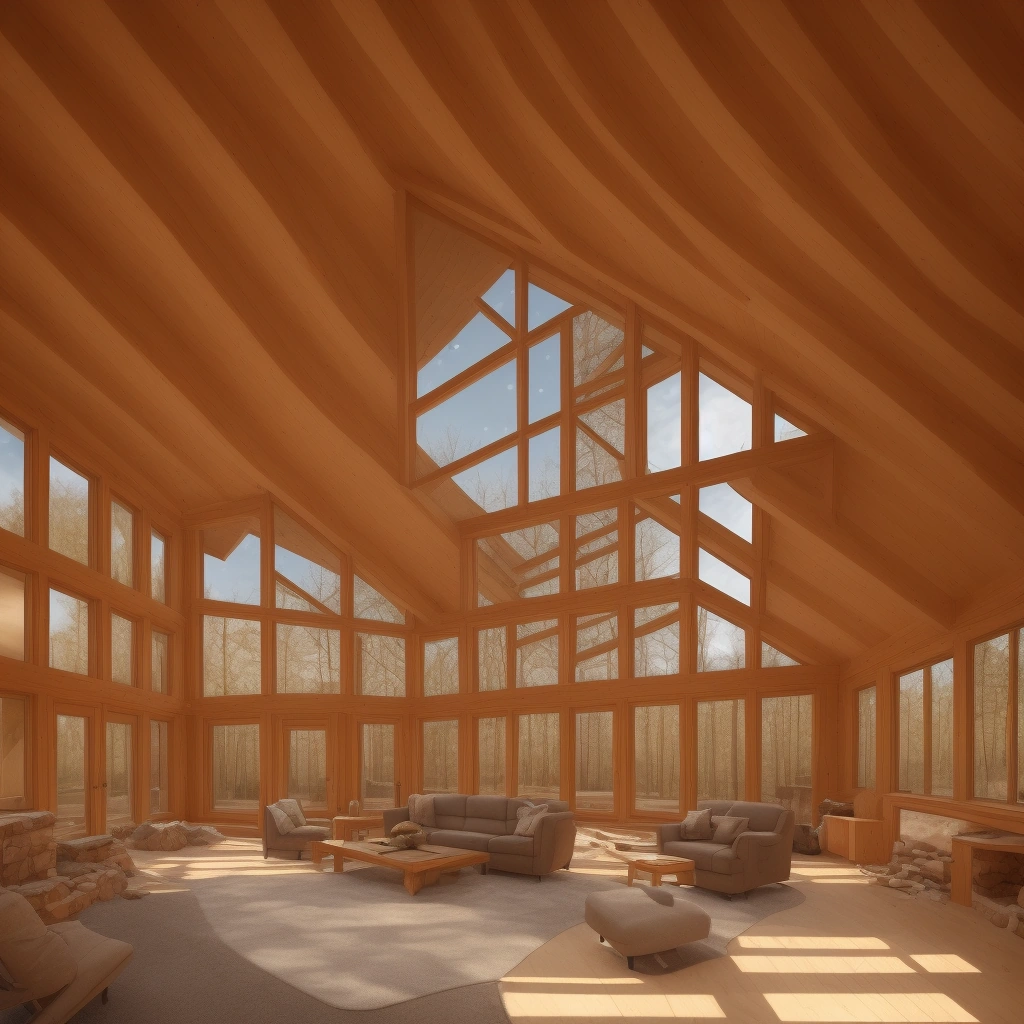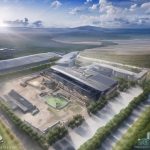Ultimate Earth-Sheltered Home Construction Manual 2025
The Rise of Earth-Sheltered Living
In an era increasingly defined by climate concerns and a burgeoning desire for self-sufficiency, the concept of living in harmony with the earth has never been more appealing. Earth-sheltered homes, once relegated to the fringes of architectural innovation and perceived as quirky experiments, are now emerging as a viable and increasingly popular option for sustainable living, driven by advancements in building science and a growing awareness of environmental impact. The ‘Ultimate Earth-Sheltered Home Construction Manual 2025’ represents a comprehensive guide to this unique green building approach, offering cutting-edge techniques and insights for constructing durable, energy-efficient, and aesthetically pleasing underground and earth-bermed dwellings.
This isn’t merely about digging a hole and building a house; it’s about creating a symbiotic relationship with the natural environment, leveraging the earth’s inherent properties, particularly its thermal mass, to create a comfortable and sustainable living space that minimizes reliance on conventional energy sources. Earth-sheltered construction directly addresses key tenets of sustainable building by significantly reducing a home’s carbon footprint. By utilizing the earth as insulation, these structures drastically minimize heating and cooling demands, often slashing energy consumption by 50% to 80% compared to conventional buildings.
This inherent energy efficiency makes earth-sheltered homes ideal candidates for off-grid living, especially when coupled with renewable energy systems like solar panels and geothermal heat pumps. Furthermore, the construction process itself can be made more sustainable by utilizing locally sourced materials such as rammed earth or stabilized adobe, further minimizing environmental impact and promoting regional economic development. The manual delves into strategies for sourcing eco-friendly materials and minimizing waste throughout the construction process. Beyond energy efficiency, earth-sheltered homes offer exceptional resilience and longevity.
The earth’s protective layer shields the structure from extreme weather events, including hurricanes, tornadoes, and wildfires, providing a safe and secure living environment. The manual emphasizes the critical importance of advanced waterproofing and ventilation systems to ensure the long-term durability and health of the structure. Proper waterproofing prevents moisture damage, while effective ventilation mitigates the risk of mold and radon buildup, ensuring a comfortable and healthy indoor environment. Detailed guidance on selecting appropriate waterproofing membranes, designing effective drainage systems, and implementing passive ventilation strategies are key components of the manual, empowering builders to create truly sustainable and resilient homes. These techniques extend the lifespan of the structure, reducing the need for frequent repairs and replacements, further minimizing environmental impact over the long term.
Underground vs. Earth-Bermed: Techniques and Considerations
Earth-sheltered construction presents two fundamental paths: the fully subterranean underground home and the partially covered earth-bermed structure. Underground homes, completely enveloped by the earth, offer the pinnacle of protection from external temperature fluctuations and environmental hazards. This design maximizes thermal stability, creating a remarkably consistent internal climate. Earth-bermed homes, conversely, integrate into the landscape with one or more walls exposed, providing natural light and ventilation opportunities while still capitalizing on the earth’s thermal mass. The choice between these approaches hinges on factors such as site topography, desired level of energy independence, and aesthetic preferences.
Both strategies represent a departure from conventional construction, prioritizing harmony with nature and reduced reliance on external energy sources, cornerstones of sustainable building and off-grid living. The strategic use of the earth’s thermal mass is central to both underground and earth-bermed designs. The earth acts as a natural insulator, buffering the home from extreme temperature swings. This results in significantly reduced heating and cooling loads, a key benefit for those seeking energy independence. For example, studies have shown that earth-sheltered homes can maintain a stable internal temperature of 55-65°F (13-18°C) year-round with minimal or no active heating or cooling.
This passive temperature regulation not only lowers energy bills but also reduces the carbon footprint associated with conventional HVAC systems, aligning perfectly with eco-friendly construction principles. Careful consideration of soil type, depth of burial, and orientation are crucial for maximizing the benefits of thermal mass. Effective waterproofing is non-negotiable in earth-sheltered construction. The constant contact with soil and moisture creates a challenging environment, demanding robust and multi-layered waterproofing systems. The 2025 manual emphasizes a comprehensive approach, incorporating elements such as bentonite clay liners, known for their self-sealing properties; high-density polyethylene (HDPE) membranes, offering exceptional durability and impermeability; and advanced drainage techniques to divert water away from the structure.
Furthermore, the manual details the importance of proper soil compaction and grading to ensure effective water runoff. Neglecting waterproofing can lead to devastating consequences, including structural damage, mold growth, and compromised indoor air quality. Investing in a high-quality waterproofing system is therefore a critical upfront cost that pays dividends in the long term. Just as crucial as waterproofing is a well-designed ventilation system. While the earth provides excellent insulation, it also creates a sealed environment that can trap pollutants and moisture.
Underground homes, in particular, require carefully planned ventilation strategies to ensure healthy indoor air quality and prevent the buildup of radon, a naturally occurring radioactive gas. The manual explores various ventilation options, including passive ventilation systems that utilize natural airflow, active ventilation systems with heat recovery ventilators (HRVs) to minimize energy loss, and geothermal heat pumps that leverage the earth’s constant temperature for efficient heating and cooling. Proper ventilation not only improves air quality but also helps to regulate humidity levels, preventing condensation and mold growth.
The integration of smart home technology can further enhance ventilation control, optimizing airflow based on occupancy and environmental conditions. Beyond these core considerations, the 2025 manual delves into innovative approaches to integrating earth-sheltered homes with off-grid living systems. This includes detailed guidance on incorporating renewable energy sources such as solar photovoltaic (PV) panels and wind turbines, as well as strategies for rainwater harvesting and greywater recycling. By combining earth-sheltered construction with these sustainable technologies, homeowners can achieve a high degree of self-sufficiency and minimize their environmental impact. The manual also addresses the permitting and regulatory challenges associated with earth-sheltered construction, providing valuable insights into navigating local building codes and obtaining the necessary approvals. This comprehensive approach empowers individuals to realize their vision of a truly sustainable and resilient home.
Material Comparisons and Construction Methodologies
Selecting the right materials is paramount for the longevity and performance of an earth-sheltered home, directly impacting its sustainability and off-grid potential. Concrete, with its inherent structural strength and substantial thermal mass, remains a popular choice for load-bearing walls and roof structures. However, the 2025 manual also delves into alternative materials that offer a lower environmental footprint, such as rammed earth, stabilized adobe, and structural insulated panels (SIPs). Each material presents unique advantages and disadvantages concerning cost, insulation value (R-value), and overall environmental impact.
For example, while concrete provides excellent compressive strength, its high embodied energy makes it a less eco-friendly option compared to rammed earth, which utilizes locally sourced materials. The manual provides a detailed comparison of these materials, including their thermal properties, structural characteristics, and life-cycle environmental footprint, enabling informed decision-making for sustainable building practices. Beyond material selection, the manual emphasizes the crucial role of waterproofing in earth-sheltered construction. Effective waterproofing is not merely a preventative measure but a fundamental requirement for the long-term durability and habitability of underground homes.
The manual details various waterproofing systems, including membrane applications, bentonite clay liners, and drainage strategies designed to divert water away from the structure. Furthermore, it explores the integration of ventilation systems to mitigate moisture buildup and ensure healthy indoor air quality, a critical aspect of off-grid living where reliance on natural systems is paramount. Proper ventilation, coupled with effective waterproofing, prevents mold growth and structural damage, ensuring the longevity and sustainability of the earth-sheltered home.
Construction methodologies are also evolving, driven by the need for greater efficiency and design flexibility in earth-sheltered projects. The 2025 manual highlights innovative techniques such as pre-cast concrete construction, which allows for faster and more precise building, reducing on-site labor and waste. This approach is particularly beneficial for complex designs and challenging site conditions. Furthermore, the manual explores the emerging field of 3D-printed earth structures, which offer unprecedented design freedom and the potential to utilize locally sourced materials, further minimizing the environmental impact of construction. While these advanced methods are still relatively new, they hold the potential to revolutionize earth-sheltered construction, making it more accessible and sustainable. These advancements align perfectly with the goals of eco-friendly and green building practices, pushing the boundaries of what’s possible in sustainable architecture.
Advanced Waterproofing, Ventilation, and Thermal Regulation
Thermal regulation stands as a cornerstone benefit of earth-sheltered homes, directly impacting energy consumption and overall comfort. The surrounding earth acts as a natural insulator, leveraging its inherent thermal mass to maintain a remarkably consistent temperature throughout the year. This passive temperature regulation drastically reduces reliance on conventional heating and cooling systems, translating to significant energy savings and aligning perfectly with the principles of sustainable building and off-grid living. The manual provides detailed guidance on optimizing thermal mass, including strategies for maximizing solar gain during winter months through strategic window placement and minimizing heat gain during summer via shading and earth berm design.
Careful consideration of the local climate and microclimate is crucial for effective thermal regulation in earth-sheltered construction. Advanced insulation techniques further enhance the thermal performance of earth-sheltered structures. Beyond traditional fiberglass or foam insulation, the manual explores cutting-edge materials such as vacuum insulation panels (VIPs) and aerogel. VIPs, while more expensive, offer exceptional R-values in a thin profile, making them ideal for space-constrained areas. Aerogel, known for its extremely low thermal conductivity, provides another high-performance insulation option.
These advanced materials, combined with proper installation techniques, minimize heat transfer through the building envelope, ensuring optimal energy efficiency. The selection of insulation materials should also consider their environmental impact, favoring eco-friendly options that align with green building principles. Effective ventilation systems are also essential for maintaining indoor air quality and preventing moisture buildup in earth-sheltered homes. While the earth provides excellent insulation, it can also trap moisture if not properly managed. The manual details various ventilation strategies, including natural ventilation techniques like cross-ventilation and stack ventilation, as well as mechanical ventilation systems with heat recovery (HRV) or energy recovery (ERV).
Earth tubes, an innovative approach, utilize the earth’s stable temperature to pre-cool or pre-heat incoming air, further reducing energy consumption. Proper ventilation design is critical for preventing mold growth and ensuring a healthy indoor environment, particularly in underground home designs. Furthermore, integrating smart home technology to monitor and control ventilation based on humidity and temperature levels can optimize energy efficiency and indoor air quality. Waterproofing is inextricably linked to effective thermal regulation and the long-term durability of earth-sheltered structures.
Moisture intrusion can compromise insulation performance, leading to increased energy consumption and potential structural damage. The manual emphasizes the importance of robust waterproofing systems, including the use of high-quality membranes, drainage layers, and capillary breaks. Proper detailing around penetrations and joints is crucial to prevent water infiltration. Furthermore, the manual explores the use of advanced waterproofing materials, such as self-healing concrete and hydrophobic coatings, which can enhance the long-term performance of the building envelope. Regular inspections and maintenance of the waterproofing system are essential for ensuring its continued effectiveness and preventing costly repairs. This focus on waterproofing directly supports both the construction guide and sustainable building aspects of earth-sheltered design.
Embracing a Sustainable Future
The ‘Ultimate Earth-Sheltered Home Construction Manual 2025’ marks a pivotal advancement in sustainable building practices, offering a comprehensive roadmap for constructing resilient and eco-friendly dwellings. By meticulously detailing both underground and earth-bermed construction techniques, the manual equips a diverse audience, from individual homeowners to seasoned construction professionals, with the knowledge to create homes that minimize environmental impact while maximizing comfort and longevity. This updated edition addresses critical aspects of off-grid living integration, including solar panel placement optimized for earth-sheltered designs and greywater recycling systems seamlessly incorporated into the building’s infrastructure.
As concerns surrounding climate change and resource scarcity intensify, earth-sheltered homes present a compelling and practical vision for a more sustainable and self-sufficient future, directly addressing the core tenets of green building. Beyond its foundational construction guidance, the manual delves into advanced strategies for optimizing thermal mass, waterproofing, and ventilation—critical elements for the long-term performance of earth-sheltered structures. For example, it provides detailed calculations for determining the optimal soil depth and composition to maximize thermal inertia, reducing reliance on conventional heating and cooling systems.
Furthermore, it presents a comparative analysis of various waterproofing membranes, evaluating their effectiveness in preventing moisture intrusion and maintaining a dry, healthy indoor environment. The manual also explores innovative ventilation techniques, such as earth tubes and passive stack ventilation, which harness natural airflow to provide fresh air while minimizing energy consumption. These detailed insights are crucial for ensuring the durability and energy efficiency of earth-sheltered homes, making them a truly sustainable alternative to conventional construction.
Moreover, the manual offers expanded guidance on integrating earth-sheltered homes with off-grid living systems. This includes detailed plans for incorporating rainwater harvesting systems, sizing solar photovoltaic arrays to meet energy demands, and implementing composting toilet systems to reduce water consumption and waste. The guide also provides valuable insights into navigating local building codes and regulations, which can often be challenging for unconventional construction methods like earth sheltering. By addressing these practical considerations, the ‘Ultimate Earth-Sheltered Home Construction Manual 2025’ empowers individuals to not only build sustainable homes but also to live more self-sufficiently and reduce their environmental footprint. The manual serves as an indispensable resource for anyone seeking to embrace a more resilient, eco-friendly, and environmentally responsible lifestyle through innovative building practices.


